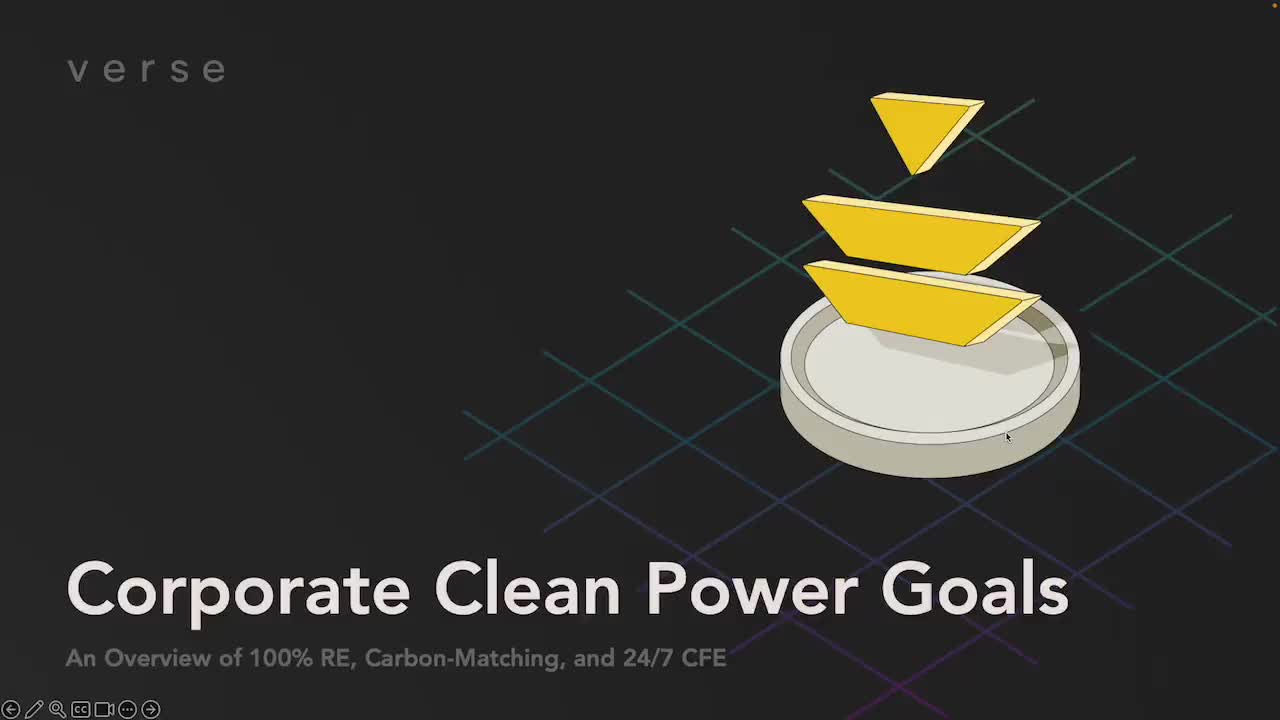Common Scope 2 Decarbonization Strategies
If you’re unfamiliar with scope 2 decarbonization strategies or need a quick refresher, check out this explainer video! It provides an overview (with examples) of three common strategies — 100% Renewable Energy (RE), Carbon-Matching (aka Emissionality), and 24/7 Carbon Free Energy (CFE).

Decarbonization Strategy #1: 100% RE
In this scenario, a company aims to match its annual power consumption with clean energy.
For instance, if company A uses 100,000 MWh of electricity between January 1 and December 31, it will purchase 100,000 MWh of clean energy in that same period.
100% RE involves matching annual energy consumption with an equal amount of renewable energy. Clean energy purchases are not restricted to the grid in which the consumption occurs.
That means a company can purchase renewable energy wherever it’s least-cost, without considering where it operates. For example, Company A, whose operations are in Louisiana, could buy renewable energy from projects in any grid.
Decarbonization Strategy #2: Carbon-Matching
The goal is to match a company’s annual emissions associated with its energy consumption with an equal amount of avoided emissions from its purchases of clean energy.
So, if Company A emits 40,000 tons of carbon in a year, it will procure clean energy that avoids 40,000 tons of carbon emissions over the same period.
Like 100% RE, carbon matching involves annual matching but focuses on carbon emissions rather than megawatt hours of energy. There is no location requirement, BUT location matters as each grid has a different carbon intensity. This approach prioritizes clean energy purchases that are least-cost from an emissions impact perspective.
For instance, a company pursuing carbon-matching would rather buy solar power in Kentucky than in California because Kentucky’s mostly fossil-fuel grid has a higher carbon emissions intensity than California’s, which has lots of clean energy and thus relatively lower emissions intensity levels.
Decarbonization Strategy #3: 24/7 CFE
The third goal is 24/7 carbon-free energy (CFE). Unlike the two previous goals, this one involves hourly matching and includes a location requirement. 24/7 CFE aims to match every MWh of a company’s electricity consumption, every hour of every day, with carbon-free electricity sources in the same grid. It is the end state of a fully decarbonized electricity system.
If a company matches 100% of its hourly consumption with CFE, the company would have a CFE score of 100%.
Which Strategy Is Right for Me?
It can be very difficult to choose from among the various scope 2 decarbonization strategies if you don’t understand the tradeoffs.
Verse uses software and services to help companies understand the benefits and drawbacks of different goals and determine which the optimal, least-cost strategy based on specific company parameters. Our Aria platform analyzes and illustrates the cost, risk, emissions, and carbon-free energy profile of the various options, and provides precise procurement roadmaps to achieve them.